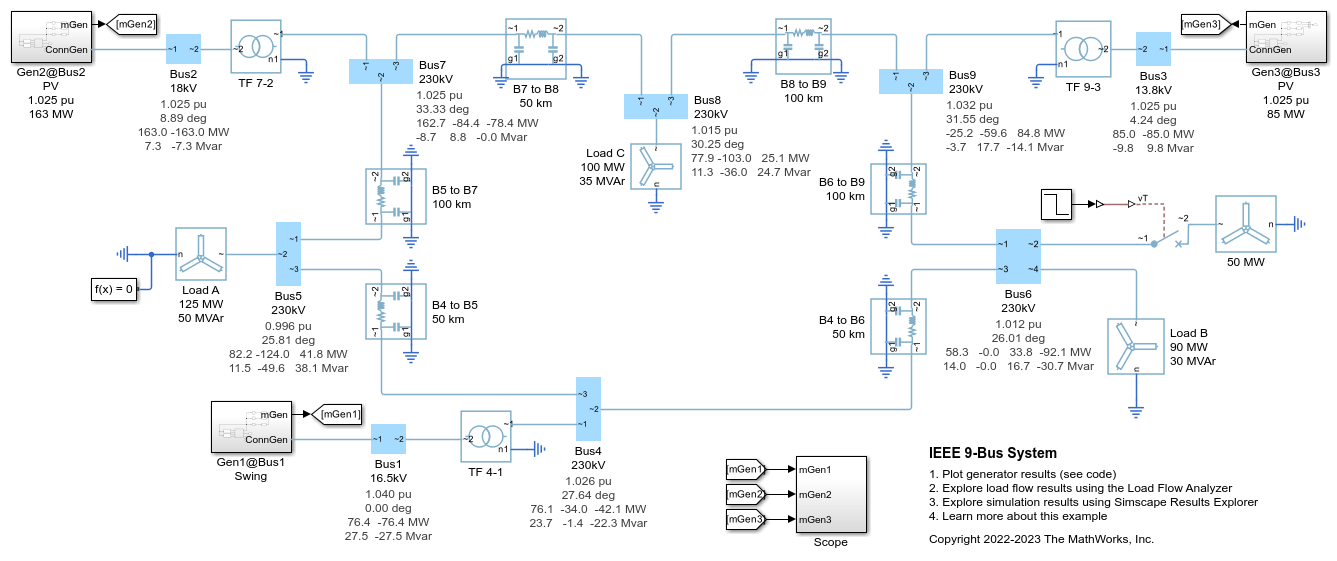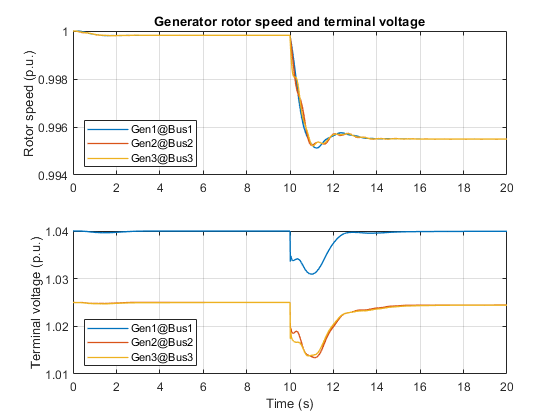IEEE 9 母线系统
此示例展示了如何对 9 母线三相电力系统网络进行建模。此示例基于 IEEE® 基准测试用例。有关详细信息,请参阅 P. M. Anderson 与 A. A. Fouad 合著的《Power System Control and Stability》(IEEE 出版社,2003 年)。
模型中有三个发电机子系统。每个子系统都包含一台同步电机以及相关联的自动电压调节器 (AVR)、励磁机、电力系统稳定器 (PSS)、调速器和原动机。
Simscape™ Electrical™ 首先对模型执行潮流分析,并确定在给定负载条件下的稳态工作点。对于每个发电机子系统,您可以使用初始潮流解来确定 AVR 的初始励磁电路电压和电流值,以及调速器的初始转矩值。要确定这些初始条件,请右键点击同步电机模块,然后选择“电气->显示关联的初始条件”。这会在 MATLAB® 命令行窗口中输出初始励磁电路电压、初始励磁电路电流和初始机械转矩。
然后,仿真将从这个稳态工作点开始。在时间 10 秒时,在母线 6 上施加额外负载。仿真完成后,生成的潮流解会附加到每条母排上。
模型概览

来自 Simscape 记录的仿真结果
下图显示了位于母线 1(平衡母线)处发电机 1 的转子转速和端电压,以及分别位于母线 2 和母线 3(PV 母线)处发电机 2 和发电机 3 的转子转速和端电压。

参考资料
[1] P. M. Anderson and A. A. Fouad, Power System Control and Stability, 2nd ed. Piscataway, NJ:IEEE Press; Wiley-Interscience, 2003.